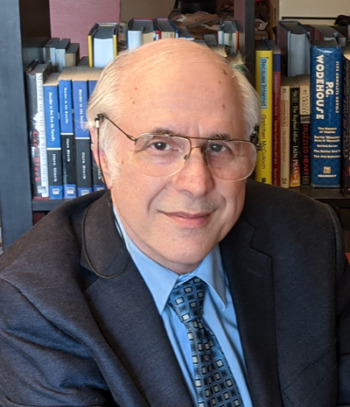In the beginning, the builders of what would become a system of massive intrusion into families, and, ultimately, the separation of millions of children from their parents, all in the name of “child welfare,” insisted that poverty had nothing at all to do with what they labeled “child abuse” and “child neglect.”
“Child abuse crosses class lines” was the mantra in the 1970s and 1980s. In the effort to pass the federal Child Abuse Prevention and Treatment Act (CAPTA), discussion of poverty was suppressed. Unless parents — and not economic inequality — could be blamed, there was no way CAPTA was going to pass. Not surprisingly, the result was a law that has led us in the wrong direction for decades.
Spoiler alert

Courtesy of Richard Wexler
Richard Wexler is executive director of the National Coalition for Child Protection Reform.
But then, when people noticed that nonwhite families were surveilled and had their children removed at vastly disproportionate rates, the child welfare establishment had a problem. There was no way they were going to admit to racial bias, so they said: It’s because those families are poor! (Spoiler alert: it’s actually both.)
That led people to look again at poverty. And though it’s taken far too long, at last we are talking about the fact that not only does poverty contribute to cases of abuse — which are a tiny proportion of what child welfare agencies (or as they should be called family policing agencies) investigate — but that poverty itself is routinely confused with neglect.
That means we’re back to issues of economic inequality. That means that most of those we accuse of neglect are not evil, nor are they sick — they are poor. And that is a problem for a multi-billion dollar industry built on forcing people into often meaningless “counseling” and “parent education” classes, putting them under constant surveillance and running foster homes, group homes and institutions. It’s also a problem for all those “helpers” who have used the system for decades to enact their own middle-class rescue fantasies on poor children, especially poor children of color.
The fallback position
So now, the child welfare establishment has revealed its fallback position: Well yes, it might be poverty — but it’s not poverty alone.
Sure, “these families” are poor, it’s argued, but they’re also mentally ill. Or they abuse substances. Or there’s domestic violence.
“Leave us free to focus on the stuff that makes us helpers feel good and forget about poverty! After all, helping with poverty can be such drudgery,” is generally how the establishment thinking goes.
One imagines a caseworker thinking: “I didn’t get an MSW to help some impoverished mother clean her kitchen!”
Why the child welfare establishment is wrong
There are three problems with the “poverty is not alone” argument.
1. Often poverty is indeed alone. If, for example, you can cut the number of homeless families whose children are taken away by half just by providing housing vouchers, (you can) and if, in fact, that works better than providing housing vouchers and also inflicting social work on those families, (it does) then odds are the problem was poverty alone.
In other cases, even if poverty wasn’t alone when the child was taken, it is all that stands in the way of reunification. Often the cookie-cutter “reunification plans” required of families require the parent to secure “stable housing and employment.” So even after a parent has jumped through all the other hoops in the plan, poverty — alone — can prevent reunification.
2. The poverty-is-not-alone argument can confuse cause and effect. When homelessness exploded after the Reagan Administration shredded America’s social safety net in the 1980s, defenders of the cuts insisted that the increase was due to mental illness. In fact, a major study at the time showed only 15% of homeless people had any sign of mental illness. And that’s pretty remarkable since, as Ann Braden Johnson wrote at the time in her book Out of Bedlam, being homeless can cause mental illness. Yeah, I know, you’d think that would be obvious.
That also means that if poor people are lifted out of poverty, that might well cure the “mental illness” that supposedly led to the “neglect” that was the pretext for family police intervention. And if it doesn’t, then providing money will allow poor people to buy treatment — just as middle-class people do.
The same applies to substance use. Poverty can drive people to self-medicate. Reduce the need for drugs, by eliminating the poverty, and then it is much easier for treatment to work. And again, if that isn’t enough, money can allow families to buy drug treatment.
After all, when Betty Ford abused alcohol and pills, no one took away her children. I doubt that D.C. Child and Family Services investigators ever showed up at the White House to check on her then 17-year-old daughter. On the contrary, Betty Ford was hailed for her bravery and founded a celebrity rehab center.
As for domestic violence, that often means taking away a child because the mother “allowed” the child to “witness domestic violence” — in other words, she didn’t run fast enough from the man who beat her up. When children are taken under these circumstances it actually compounds the emotional trauma for that child. As for why the mother doesn’t “just leave,” there often are two reasons: First, her well-grounded fear that if she seeks help, the helper, usually a “mandated reporter,” will “turn her in” and the family police will take her children. But also: The abuser is often the breadwinner. The mother can’t afford to leave. I wonder what might fix that?
3. We have seen over and over that money – alone – reduces what family police agencies call neglect. The family policing establishment has a ready answer for that one, too: “Well sure, we wish government would eliminate poverty but it’s not going to happen.”
But you don’t have to eliminate poverty — though that would be an excellent idea — just curb its worst effects. For example, raise the minimum wage by $1 an hour, reduce neglect by 10%. Increases as small as $100 can reduce “neglect.” And, of course, we’d have a better chance at getting stronger efforts to reduce poverty if the family police stopped demonizing poor people as, at worst evil, and at best sick! Sick! Sick!
Even “prevention” advocates reinforce this stereotype whenever they refer to child abuse and neglect as a “public health” problem. It’s not. It’s a social justice problem.
If the solution is money, and the family police take the child or otherwise harass the family instead, then that is confusing poverty with neglect. If the solution is money, then the problem is poverty, whether the poverty is “alone” or not.
***
Richard Wexler is executive director of the National Coalition for Child Protection Reform.
































